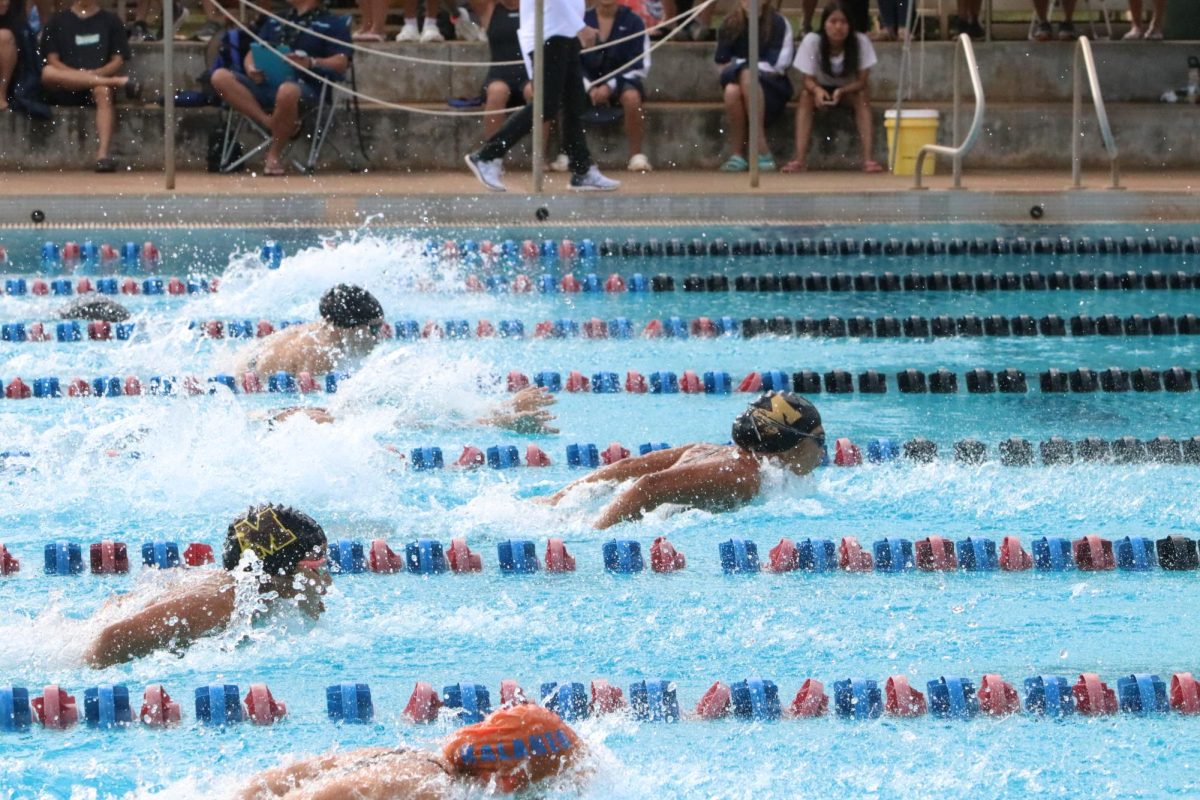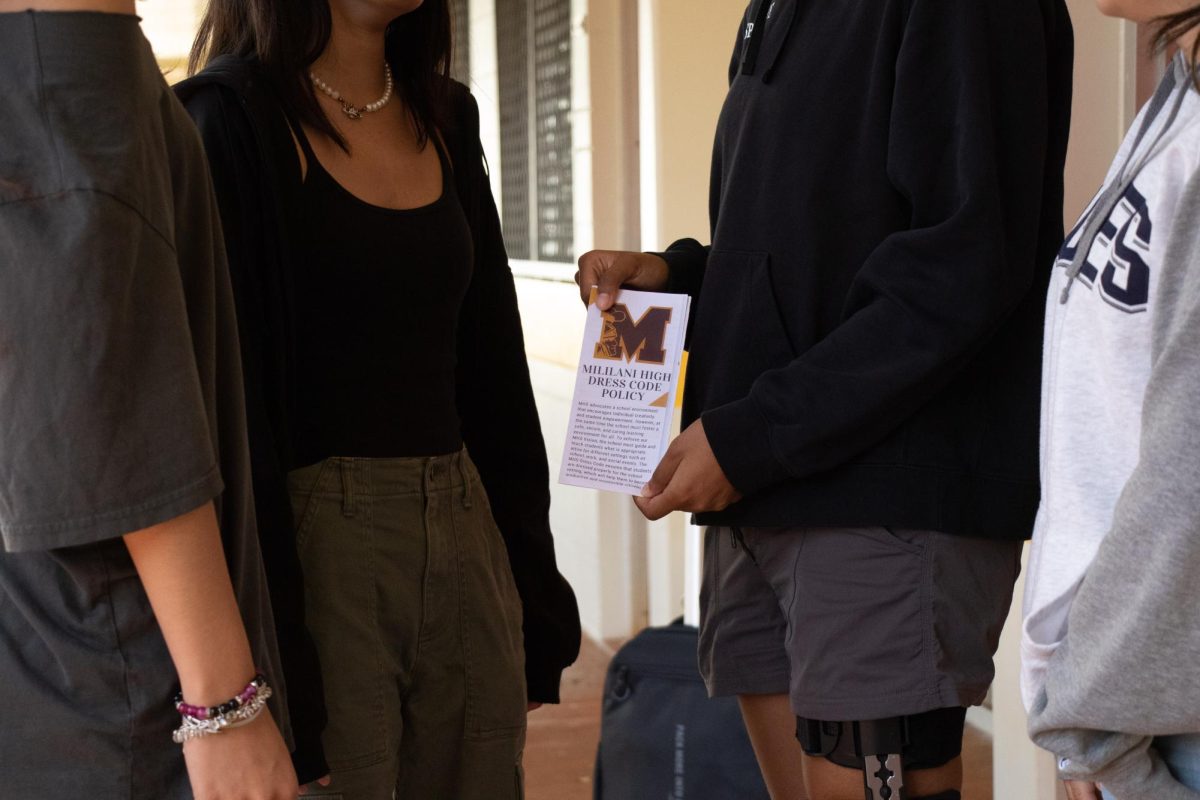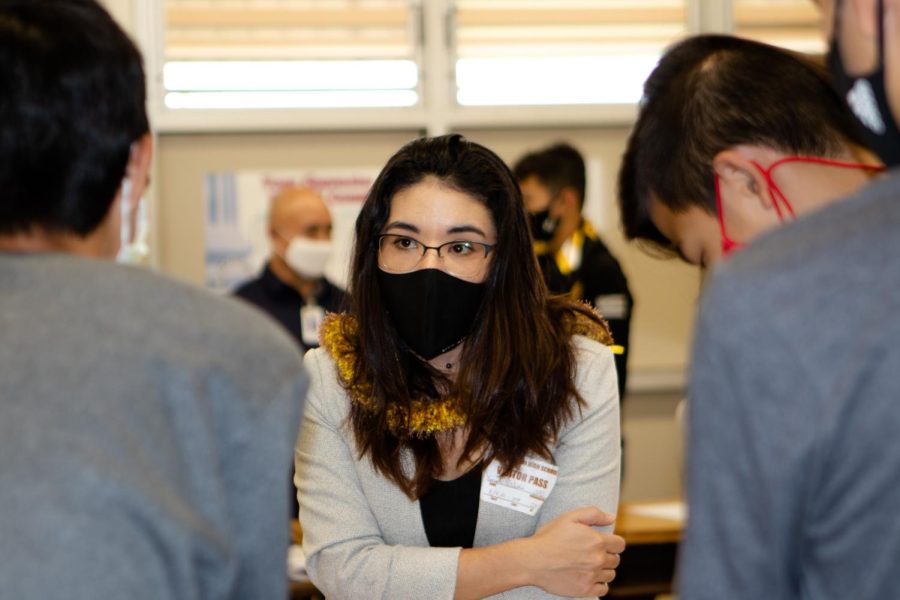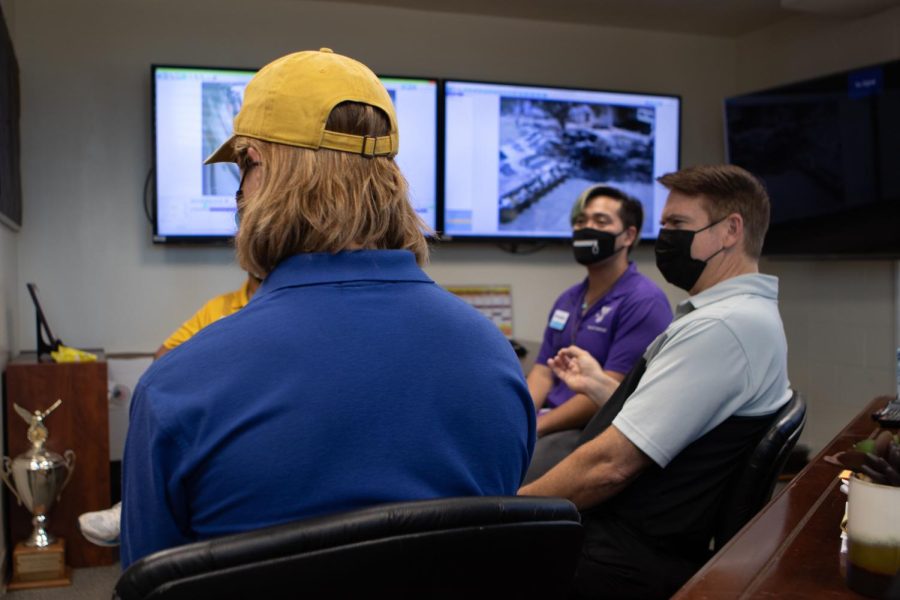By Shelby Haygood
[email protected]
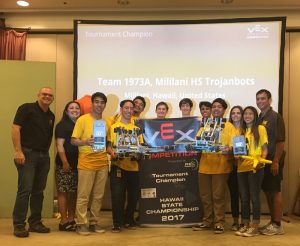
Robotics teams 1973A and 1973B were sent to the 2017 Hawaii State High School VEX Championships on Jan. 4 after previously qualifying in the Pan-Pacific Championships in October. Team 1973A, consisting of Seniors Noah Evile and Tyler LaBonte, as well as Junior Joseph Knaus won in the tournament championships and also received the Innovation Award for having the most innovative robot. Team 1973B with Seniors Sean Dunston, Jordin Stauffer, Nikolas Sagaysay and Juniors Liezl Rae Chan and Damien Santiago advanced to the quarter finals but ultimately fell short of the semifinal match.
“Having the opportunity to compete at the VEX Robotics World Championships is a great honor for our team. Historically, (MHS) has done very well at worlds, one year even making it all the way to the finals. (Evile), (Knaus), and I are very excited for the challenge, and we hope to overcome our limits and continue Mililani’s tradition of excellence,” expressed LaBonte.
In preparation for the VEX Championships, both teams spent hours after school strategizing and calculating new ways to overcome the obstacles they would face during competition. “It begins with the design of the robot, usually (Evile’s) brainchild. For this tournament, he developed a simple design that utilized a pneumatic claw. (Next) we have to actually build the robot which included motors and wiring. (Building) can take anywhere from two to six weeks. After that, I start work on the programing in order to make the robot (move, more specifically) driver control and autonomous code. This usually takes one to two weeks, and the troubleshooting can go up to the morning of the tournament,” said LaBonte.
After months of preparation, both teams were able to carry themselves far in the competition. “Caffeine was a requirement to overcome the obstacles we encountered. During the competition, we were somewhat sleep deprived from working on the robot the night prior,” explained Stauffer. LaBonte added, “Training for VEX competitions is a very multifaceted and lengthy process as they say, ‘Fail to prepare, prepare to fail.’”
Despite the hours that went into building a robot from the ground up, participants continued to find the work fun and challenging. “We compete to uphold the high standard that Mililani robotics has had in the past. It never really becomes stress, we do it out of enjoyment,” Evile explained. LaBonte also added, “A lot of driver practice is done (at least six hours) in the week before the competition. All this preparation really pays off come game time, because it allows the team to devote more attention to strategizing.” With strong team members to help each other when it’s necessary, both 1973A and 1973B can lean on one another for support.
Both LaBonte and Evile have spent years working together to create robots and work around any obstacle they encounter. “Team 1973A takes a very analytical approach to obstacles encountered during the competition. We first look for the cause of the problem, and try to trace it back to its root source. Then, we brainstorm options for changing or sidestepping the difficulty, and we implement the best idea. This eliminates lengthy troubleshooting processes that waste time and effort, such as fiddling with the mechanics when the problem really occurs in the program,” stated LaBonte.
As team 1973A continues to the VEX Robotics World Championship, team 1973B intends to utilize their newfound knowledge in the next competition.


